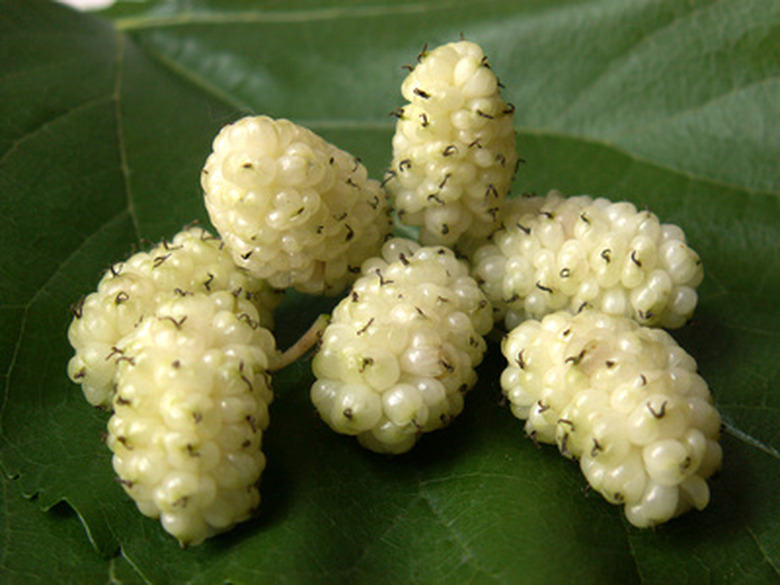What Is A Mulberry Tree?
The mulberry trees in the United States belong to an order called Moraceae. The mulberry tree produces edible fruit that birds crave and people use to make preserves and other culinary treats. Mulberries can be a landscaping option, but according to the University of Connecticut Plant Database website, the tree is often more trouble than it is worth.
Size
None of the mulberry trees grows to great heights, with the red mulberry the tallest, with some at 70 feet. The spread on a red mulberry can be as wide as 50 feet. The white mulberry grows from 30 to 50 feet on average. The paper mulberry can make it to 50 feet under good conditions, while a Texas mulberry is often no taller than 10 feet and rarely exceeds 20 feet.
- The mulberry trees in the United States belong to an order called Moraceae.
- The paper mulberry can make it to 50 feet under good conditions, while a Texas mulberry is often no taller than 10 feet and rarely exceeds 20 feet.
Geography
The white mulberry is an imported tree from China and now grows in much of the East and in some Pacific States. The red mulberry is native in the eastern states from southern New England to Florida and as far west as Texas and Minnesota. Paper mulberry, another mulberry brought to America from the Orient as an ornamental, now grows in several states east of the Mississippi River. Texas mulberry, a native species, has the smallest range, growing in portions of Texas, New Mexico and Arizona.
Features
Mulberry leaves are the best feature of the tree from an aesthetic viewpoint, as the foliage is a shiny shade of dark green. The leaves will come in varied shapes on the same tree, with some having multiple lobes and others having none. Mulberry bark is typically a darker reddish-brown hue. In autumn, a mulberry's foliage goes from green to a dull yellow.
- The white mulberry is an imported tree from China and now grows in much of the East and in some Pacific States.
- Mulberry leaves are the best feature of the tree from an aesthetic viewpoint, as the foliage is a shiny shade of dark green.
Considerations
The mulberry is adaptable to soil that is wet, dry, acidic, alkaline and sandy. One of the tree's assets is that it can flourish in many conditions, making it an option for that part of your property that other trees will not grow on. Mulberry trees have no preference towards sunny or shady spots and they will grow in urban scenarios and in times of drought.
Potential Problems
Mulberry trees can reproduce by suckering, which involves growing new trees directly from the root system. This can work to your advantage when you want to have a thicket of mulberries on your property, but can be a problem if you do not desire this. You then have to remove the new growth. Diseases such as cankers, leaf spot and powdery mildew often blight mulberries. While the tree's fruit will attract birds, this can become a negative once the colorful dropping begin to show up on motor vehicles and sidewalks.
- The mulberry is adaptable to soil that is wet, dry, acidic, alkaline and sandy.
- While the tree's fruit will attract birds, this can become a negative once the colorful dropping begin to show up on motor vehicles and sidewalks.
References
- Ohio Department of Natural Resources: Mulberries
- "National Audubon Society Field Guide to Trees;" Elbert L. Little; 2008
